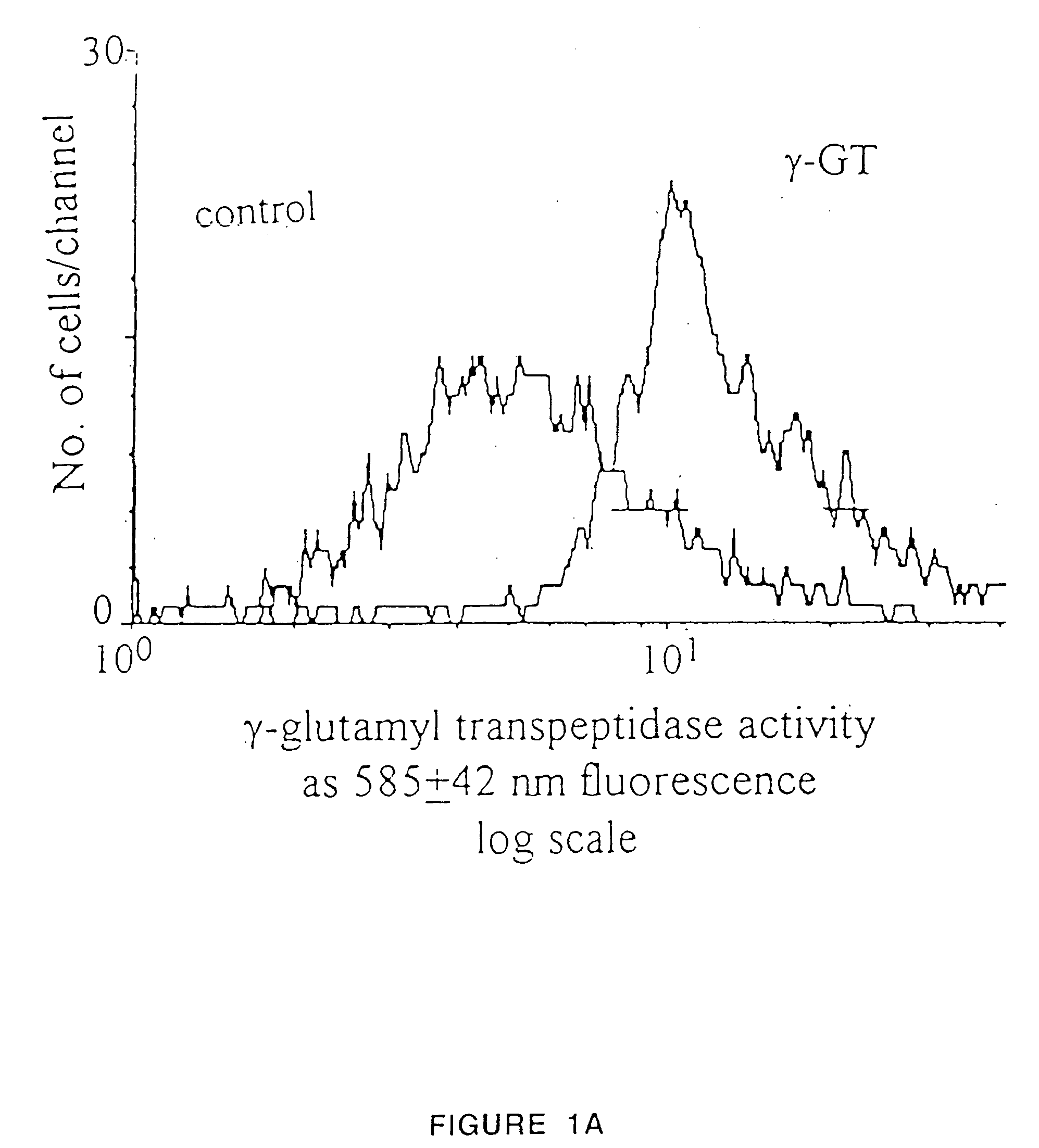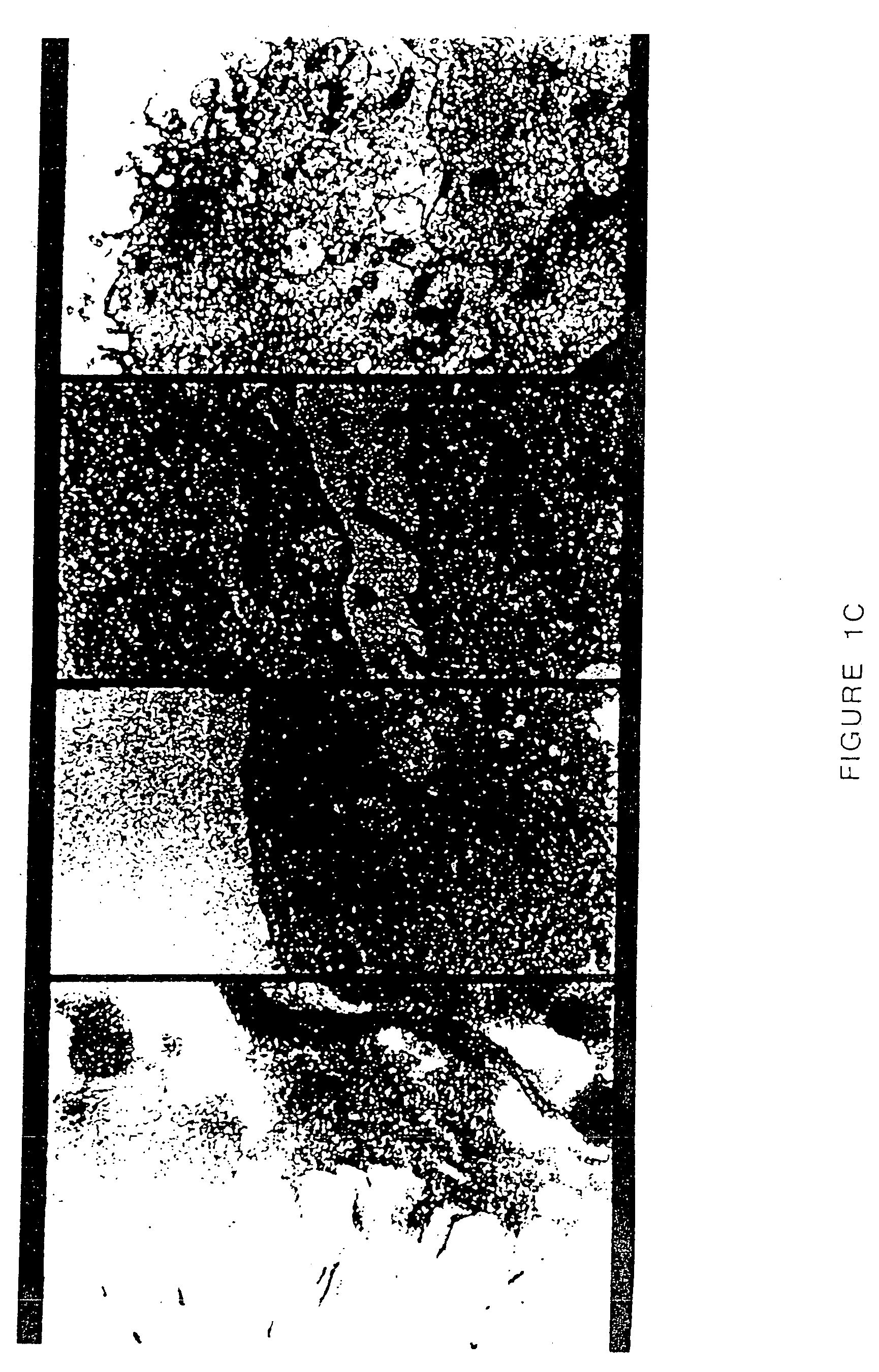Production of functional proteins: balance of shear stress and gravity
a technology of functional proteins and gravity, applied in the fields of protein chemistry, endocrinology and gene therapy, can solve the problems of limited studies on the regulation of 1-hydroxylase activity, limited extrarenal 1,25-dioh d/sub>3/sub>production, and achieve the effect of increasing mnsod
- Summary
- Abstract
- Description
- Claims
- Application Information
AI Technical Summary
Benefits of technology
Problems solved by technology
Method used
Image
Examples
example 1
[0055] Human Renal Cortical Cells
[0056] Human renal cortical cells were isolated by Clonetics Inc. (San Diego, Calif.) from kidneys unsuitable for transplantation. Differential trypsinization resulted in cell fractions highly purified for proximal tubular cells compared to the natural mixture of cells in the renal cortex. The co-culture of the natural cell mix, and highly purified proximal tubular cells were cultured separately in a special growth medium with 2% fetal calf serum.
example 2
[0057] Rat Renal Cortical Cells
[0058] Rat renal cells were isolated from renal cortex harvested from euthenized Sprague Dawley rats (Harlan Sprague-Dawley, Cleveland Ohio) as described (44). In brief, renal cortex was dissected out with scissors, minced finely in a renal cell buffer 137 mmol NaCl, 5.4 mmol KCl, 2.8 mmol CaCl2, 1.2 mmol MgCl2, 10 mmol HEPES-Tris, pH 7.4. The minced tissue was placed in 10 ml of a solution of 0.1% Type IV collagenase and 0.1% trypsin in normal saline. The solution was incubated in a 37° C. shaking water bath for 45 minutes with intermittent titration. The cells were spun gently (800 rpm for 5 minutes), the supernatant aspirated, the cells resuspended in 5 ml renal cell buffer with 0.1% bovine serum, and passed through a fine (70 mm) mesh. The fraction passing through the mesh was layered over a discontinuous gradient of 5% bovine serum albumin and spun gently. The supernatant was again discarded. The cells were resuspended in DMEM / F-12 medium (ciprof...
example 3
[0059] Culture Techniques: Rotating Wall Vessels
[0060] When grown under conventional conditions in DMEM / F12 supplemented with fetal calf serum and an antibiotic cocktail such as ciprofloxacin and fungizone, both the highly purified cells as well as the cell mix form a monolayer. Fetal calf serum was used at optimal concentration: 2% for human calls and 10% for rat cells. In order to increase epithelial cell differentiation (1, 45), renal cells were cultured in a rotating wall vessels known as a 55 ml slow turning lateral vessel (STLV) (1, 45). To initiate cell culture, the slow turning lateral vessel was filled with medium, and seeded by addition of cell suspension (2×106 cells / ml). Residual air was removed through a syringe port and vessel rotation was initiated at 10 rotations per minute, and maintained for 10-16 days. Medium was changed every 2 to 3 days depending on glucose utilization. Concomitant with cells, microcarrier beads were added an 5 mg / ml to promote aggregate format...
PUM
| Property | Measurement | Unit |
|---|---|---|
| Stress optical coefficient | aaaaa | aaaaa |
Abstract
Description
Claims
Application Information
 Login to View More
Login to View More - R&D
- Intellectual Property
- Life Sciences
- Materials
- Tech Scout
- Unparalleled Data Quality
- Higher Quality Content
- 60% Fewer Hallucinations
Browse by: Latest US Patents, China's latest patents, Technical Efficacy Thesaurus, Application Domain, Technology Topic, Popular Technical Reports.
© 2025 PatSnap. All rights reserved.Legal|Privacy policy|Modern Slavery Act Transparency Statement|Sitemap|About US| Contact US: help@patsnap.com



